
Talc
Get Price Quote
Talc : Talc is fine-grained white, greenish, or gray mineral, Mg3Si4O10(OH)2, used in talcum and face powder, as a paper coating, and as a filler for paint and plastics. It is used in: Plastic Food Pharmacuticals Cosmetics FMCG Paint

Talc
2 Per
We have natural talc lumps & powder having brightness 85% to 98% mesh size 100 mesh to 2000.its has been use in paint plastic rubber industries.
Best Deals from Talc
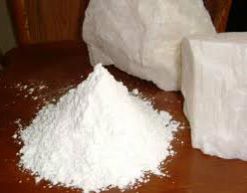
Talc
Get Price Quote
15 Metric Ton (MOQ)
Talc (also known as french chalk) / Soapstone / Steatite / French chalk powder for paper industry is a naturally occuring mineral. Rocks comprising primarily of talc are known as soapstones. The chemical name of talc is hydrated magnesium silicate. Due to its structural properties (extreme softness and compressibility), tactile properties (smoothness and slipperiness) and visual properties (high whiteness and brightness) it is an ideal candidate as a functional filler in the paper industry. Further, talc is hydrophobic in nature and thus adsorbs many organic compounds that would otherwise agglomerate to form pitch as well as decreases the tackiness of stickies thereby also preventing their agglomeration reducing their tendency to stick to the processing equipment. Finally talc offers high paper strength potential. This means that even with a high amount of filler load in the paper, there is very little decrease in the paper strength. We at Anand Talc have decades of experience in supplying talc powder to the paper industry and offer ideal specifications for the benefit of our customers.
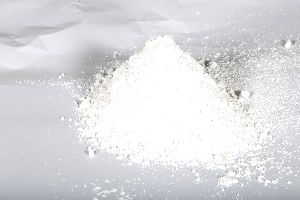
Paint Talc
Get Price Quote
Use of talc reduces the use of the primary pigment that goes into paint production, bringing down the manufacturing costs. It reinforces the paint film and improves the durability and stain resistance of paint. Due to its rust inhibitive properties & corrosion resistance, the finish lasts longer.Wet scrub resistance : Our talc grades improve the wet scrub resistance of decorative paints, in contrast to talc containing chlorite (Mel-Al-Silicate), which is not hydrophobic. Mud Cracking Resistance : Our talc's platy particles act as bridges between binder agglomerates and strengthen the paint film. The higher the aspect ratio and particle size of the talc, the better the mud cracking resistance. Matting : Our Talc gives a silky look to paints. Coarse, lamellar talc particles are very efficient matting agents in high PVC paints, Our fine talc with high surface area can be used to absorb excess binder and give a flattening effect to paints or coatings below critical PVC. Opacity : Lamellar structure (high aspect ratio) of our grades help to disperse TiO2 to improve hiding power and reduce formulation costs.Barrier Effect : The talc platelets reduce oxygen or water transmission, and protect the binder from UV radiation, thus improving the weather resistance of outdoor paints, Anti-corrosive : The same barrier effect reduces migration of corrosive agents through steel protective coatings. At the same time, the hydrophobic talc increases the adhesion of the coating film on the steel substrate, while the platelets improve the mechanical strength of the film. High Solids : Our double classified, de-dusted talc with low surface area (low oil absorption) allow a higher filler loading in high solids coatings, resulting in lower VOC emission, lower formulation cost and improved performance at the same time.
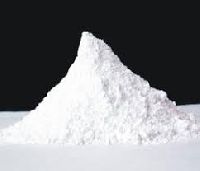
industrial talc
Get Price Quote
Talc is an important industrial mineral. Its resistance to heat, electricity and acids make it an ideal surface for lab counter tops and electrical switchboards. It is also an important filler material for paints, rubber and insecticides. Even with all these uses, most people only know talc as the primary ingredient in talcum powder. Mineral specimens are not very common as it does not form very large crystals. However, it often replaces other minerals on an atom by atom basis and forms what are called pseudo morphs (false shape). The talc takes the form of the mineral it replaces. A specimen of what looks like milky quartz is quite a surprise when it not only has a soapy feel but can be scratched by a fingernail.
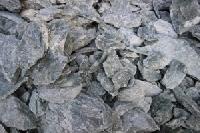
Talc
Get Price Quote
Talc is a naturally occurring mineral whose chemical name is hydrated magnesium silicate (h2mg3(sio3)4). It is formed by metamorphosis of sedimentary rocks namely dolomite, pyroxenite, amphibolite and serpentine.

Talc
Get Price Quote
We are offering talc. talc can be use in paint, plastic, pharma, paper industries

Soapstone Talc
Get Price Quote
We are one of the reliable Manufacturers and Suppliers of Soapstone Talc, powder in different grades and mesh size ranging from 65% to 95%+ brightness with low calcium and high calcium content according to buyer's requirement. Soapstone is widely used in different industries including pesticide, paper, paints, ceramic, plastic, cosmetic, Pharma etc.

Talc
Get Price Quote
We present the finest quality Talc Mineral in the national as well as international market. Magnesium Silicate Hydroxide is an important industrial mineral. Its resistance to heat, electricity and acids make it an ideal surface for lab counter tops and electrical switchboards. It is also an important filler material for paints, rubber and insecticides. It is also used in textile industry as an absorbing agent for bleaching cotton, removing grease spots etc. and to make high voltage insulators, glazes, acid and alkali proof vessels rain water piping etc. Even with all these uses, most people only know talc as the primary ingredient in talcum powder. Besides, we are one of the distinguished Natural Talc Manufacturers as well as Suppliers in India.
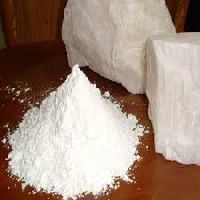
industrial talc
Get Price Quote
Due to low cost and platy structure, Talc is used in production of decorative paints, coatings, primers, enamels, adhesives, putties and other products of the industry. Talc improves fluidity and coverage properties of paint, provides air resistance to them, increase smoothness and stability of paint products.
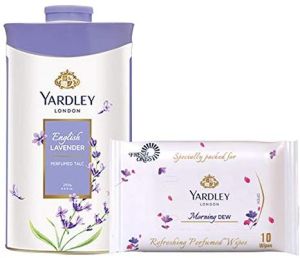
Yardley London English Lavender Perfumed Talc
15 - 62 Per Piece
100 Piece (MOQ)

Talc
Get Price Quote
We are one of the largest Talc Manufacturers in the country. Talc is an important industrial mineral. Talc Mineral is an important filler material for paints, rubber, insecticides, cosmetics, plastics, paper, ceramic and pharma. Talc Powder is Very fine white to grayish white odorless tasteless powder, insoluble in water but slightly soluble in dilute acids. Natural Talc show low abrasion and is remarkable for color consistency and creep as well as heat resistance. In addition to this, we are also counted among the prime Talc Suppliers in India. Industrial Applications Talc is one of the most important industrial minerals and is the most common mineral for daily use as a body and face powder. Talcum Powder, the name derived from the mineral itself, is used in most urban homes the world over. The invention of perfumed talcum powder has been a contributing factor in the growth of modern fashions in cosmetics. The use of talc was known to civilisations in antiquity. The ancient craftsmen of the Mohenjodaro and Harappa civilisation, (in Sind, now in Pakistan), about 5000 years ago, exercised their skill on steatite, engraving their seals with representations of animals and mythological signs, before subjecting the carving to heat to acquire hard, white lustrous, enamelled surfaces. Small sculptures, ornate bosses and vessels were also made from the mineral during those early times. Pulverized talc has wide industrial applications as filler in rubber, textile, plastic, linoleum, asbestos products, polishes and soaps; as a loading agent for paper of all kinds; as a carrier of insecticidal and pesticidal dusts and for coating calcium ammonium fertiliser. Most of the rubber manufacturers use talc powder as a lubricant to prevent ungalvanized rubber goods from sticking. The purer variety of steatite after calcination, industrially called 'Lava' is used in the manufacture of low loss ceramic materials required for high frequency insulations in all kinds of radio, television and related instruments. Bricks made out of crushed steatite bonded by sodium silicate are used for ssthe manufacture of furnaces in which argentiferous lead is softened before desilverising. Paper industry accounts for about 50% of the total consumption, in the domestic industry, 15% is shared by the insecticide and pesticide industries and only 3% by talcum powder manufacturers. The remaining quantity is consumed in textile, ceramics, paints, rubber, foundry facing and other industries. Paper Talc both in pulverized and brick forms, are used in this industry. Pulverized material of 200-300 BSS sieve is required as filler. It is used in the same way as china clay, that is, the talc powder is mixed with pulp before making into paper. A number of paper manufacturers are changing over from the use of china clay to French chalk as filler and loading material. The brightness in talc is 85 to 88º as compared to 75º in china clay. Since 1960, the consumption of talc in the paper industry has greatly increased. Paper industry requires talc powder, known as French chalk, of pure white quality. It should be free from gritty material. It should have low CaCO3 content, not exceeding 4%; also FeO should not be more stha 2%. Off-colour variety of talc free from grit is used for brown, roofing or inferior type of paper. Soapstone bricks are used for lining pulp tanks in the paper industry. Textiles Textile industry also prefers talc powder free from grit and colouration, which is used both for loading and bleaching certain types of cotton goods. Inferior grades are used in back filling textiles. Cosmetics In the manufacture of body and face powder, finely pulverized talc of very high purity is required. The material is generally reduced to fine particles by micronising. Cosmetics are prepared with a base of talc to which are added covering agents like pigments and adhesives, starches and perfumes. A common adhesive is zinc stearate. It is now being fast substituted by lithium stearate. In the manufacture of dentrifices some quantity of talc is used, here as a polishing agent. Dentrifices are prepared by mixing suitable proportions of polishing agents like talc, precipitated limestone, kaolin, calcium sulphate, calcium phosphate with gum, glycerin, soap and other chemical ingredients. The pharmaceutical industry requires talc containing less than 0.1% FeO. Natural material of such purity is generally not found and pharmaceutical talc is preferred by passing the high purity powdered talc over a magnetic separator to reduce the iron content. Rubber In rubber industry talc is used for two purposes, one to prevent rubber moulds from sticking and the other as compunding material in the preparation of certain types of hard rubber. The consumption of talc for the latter use is small. Generally grade II to III are used in the rubber industry. Talc should be of fine mesh all passing through 200 mesh. Ceramics Talc is increasingly being used in the manufacture of artwares, jars, wall and floor tiles. It serves as a non-plastic ceramic material. The addition of talc in suitable proportions in the body of mixtures for porcelain, jars etc. prevents the crazing (cracking) effect on the glazes. The proportion of talc in the ceramic body may go upto 80%. It is valued for its refractoriness and stability, as well as extremely low shrinkage at high temperature. Talc converts into clino-enstatite at about 1300º C. Between 800ºC to 840ºC, the water molecules are driven off and talc dissociates into enstatite and amorphous silica without undergoing any change in shape, the shrinkage being 0.0005 inch only. In the manufacture of ceramic goods required for the electrical industry, the talc should not contain more than 1.5% FeO and CaO. Some consumers do not regard CaO as having any harmful effect. Steatite suitable for the manufacture of 'lava' insulators must he dense, compact, uniform and homogeneous intexture, free from any inclusion and parting planes. It should not contain CaO more than 1.5% and Fe2O3; more than 1%. The iron oxide is a colourant and gives the fired shapes an unattractive colour. An increase of iron oxide above two per cent decreases the 'Q' value (ratio of reactance to resistance) and increases the dielectric constant. CaO imparts abrasiveness and usually a short vitrification range and sometimes a high firing shrinkage. Paints In this industry, foliated, fibrous or lamellar talc of fine mesh (300 mesh) is preferred. It is used as a paint or an extender in paint industry. Colour, particle size and oil absorption are the main criteria for selecting talc for paint manufacture. Talc suitability for paint should have volatile matter below 0.75%, oil absorption within 5 of the approved sample and solubility not more than 0.25% in water. Asbestine is the trade name given to fibrous talc suitable for paint making. Other uses A fair proportion of medium to inferior grades of talc is used in the manufacture of perticides and insecticides. Talc is used here as a carrier. Talc powder prevents infestation of food grains from insectsand pests and hence it is sprinkled over food grains kept in big godowns. Other uses are for making crayons for marking purposes and for tailors' chalk. Talc for Plastic & Rubber Low Abrasion : Talc is the softest of all minerals with a Moh´s hardness of 1. But only pure, chlorite-free talcs, give the low abrasion values which lead to a long tool life in compounding and extrusion. Colour Consistency : PP compounds are pigmented in a large variety of colours. To ensure reproducible colour shades, the colour of the talc should show as little variation as possible. Flotated Ztalcs are most tightly controlled and give a significant benefit to formulators. Creep Resistance : Creep is the deformation of pipes under load (e. g. under soil) over a long period of time. Pure, platy talc leads to superior creep resistance compared to other fillers. Oxygen Barrier : In polyolefine food packaging, talc reduces oxygen and water vapour transmission. Pure, chlorite-free talcs are chemically inert and can fulfil the anti-migration requirements of EN 1186. Stiffness (E-Modulus) : The main function of talc in polymer compounds is to increase the E-modulus. Talcs with high aspect ratio are the most efficient. Thermal Conductivity : Talc/polyolefine compounds have a significant higher thermal conductivity than the virgin polymer. Heating and cooling are shorter, resulting in faster production rates. Impact Srength : A loading of up to 10% of a fine, pure platy talc like Ztalcs M05SL can increase stiffness and impact strength of polypropylene compounds at the same time. Nucleation : Fine talcs with a median particle diameter of 2 µm very efficiently promote the crystallization of polypropylene, leading to improved impact strength. Heat aging resistance : Magnetic impurities like soluble iron oxide are removed by electromagnetic separation in the purification for Ztalcs SL grades.Iron, which is incorporated in the talc crystal (replacing Mg atoms), is inactive and does not have a negative effect on the heat distortion temperature. Scratch Resistance : Pure, soft talc leads to a better slip of scratching objects.Greyish talc reduces the visibility of scratches. Reinforcement of Rubber : The micro-crystalline Extrafil talc grades with high specific surface area improve mechanical properties of rubber compounds, at the same time reducing gas permeability and electrical conductivity.

Talc
Get Price Quote
We manufacturer superior quality Talc Powder that is widely required in different industries. The Natural Talc Powder, which we offer, is a Hydrated Magnesium Silicate. The Talc Powder, we bring forth, is a naturally occurring platy mineral. It is very fine white to greyish white odourless tasteless powder, insoluble in water but slightly soluble in dilute acids. The Talc Powder, provided by us, is used in the manufacturing of cosmetic products, paints, polymers and many other products. Accurate Composition Reliable Highly Demanded Industries where we use Talc are : Paint Industry Rubber Industry Textiles Industry Cosmetic products Paper Industry Fertilizers, Pesticides, Insecticides.

Talc
Get Price Quote
20 Kilogram (MOQ)
we are offering talc.calcium : 2% - 15%, brightness: 85% -98%.

Talc
Get Price Quote
Talc is an important industrial mineral. It is an important filler material for paints, rubber, insecticides, cosmetics, plastics, paper, ceramic and pharma. It is Very fine white to grayish white odorless tasteless powder, insoluble in water but slightly soluble in dilute acids and its technical specification are as under: Uses of Talc Powder Talc is used in making paper, ceramics, cosmetics, paints, detergents, foam / rubber, putties. It is also used in making of precious products like Talcum powder, pharmaceuticals & plastics.

Food Grade Talc
Get Price Quote
Talc as a inert and pure material is useful as food additive, It is used as carrier for food colors and also for filtering oils. Strict purity standards as per Jecfa, Eu Pharmacopia and Us Pharmacopia are followed to manufacture food grade talc products.

Talc
Get Price Quote
The company has marked its prominence in manufacturing Talc as per the application area and requirement of the customer. The natural Talc available with us is free flowing and pure, thus it is widely appreciated by the clients. Features : Higher stiffnessCreep resistance at both ambient and elevated temperaturePure and naturalFree from impuritiesFree flowing Application Areas : PaintsCeramicsPolymer IndustriesToilet Soaps
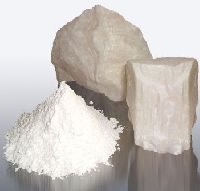
industrial talc
Get Price Quote
Mineral Talc can be crushed into a white powder which is widely known as Talcum Powder or Baby Powder. It is a rock known as steatite or soapstone and we convert it into a fine powder used for cosmetics item.It is very smooth and can be used in products that require suppleness and smoothness. Thus it is very important industrial material.

industrial talc
Get Price Quote

Talc
Get Price Quote
1 Metric Ton (MOQ)
IN DIFFERENT GRADES FOR DIFFERENT INDUSTRIES

Talc
Get Price Quote
Soapstone or Steatite or Talc is an alteration product of original or secondary Magnesium minerals. It is hydrous Magnesium Silicate and its chemical composition would correspond to 63.5% Silica (Si02), 31.7% Magnesia (MgO) and 4.8% water (H20). In nature, chemically pure Talc is very rare but in general it has some contaminations. Talc has a greasy or soapy feel and pure Talc is characterized by extreme softness. Talc has good luster or sheen, high slip or lubricating power, good hiding power and ability to absorb specific types of oils and grease. It is inert to most chemical reagents although it exhibits a marked alkaline pH of 9-9.5. It has low electrical and chemical conductivity. Our Talc Products Talc PHA : Talc PHA is highly pure, white, Talc with brightness ranging from 85% to 93%. This grade is developed specially to cater the needs of pharmaceuticals, baby powders, very high grade cosmetics, body soaps, etc. This grade is available in top cut of 200 mesh/75 micron to 800 mesh/20 micron. (Sterilization also available if required) Talc COS 800 : COS-800 is very pure, white, and highly lamellar Talc with brightness ranging from 75% to 95%. This grade is developed specially to cater the needs of cosmetics, plastics, rubber threads, body soaps, body powder, paper industries etc. This grade is available in top cut of 200 mesh/75 micron to 1250 mesh/10 micron. (Sterilization also available if required) Talc 801 : Talc-801 is pure, super white, and highly lamellar Talc with brightness ranging from 75% to 98%. This grade is developed specially to cater the needs of paints, plastics, rubber threads, general purpose soaps, detergents industries This grade is available in top cut of 200 mesh/75 micron to 1250 mesh/10 micron. Talc 701 : Talc-701 is super white Talc with brightness ranging from 75% to 95%. This grade is developed specially to cater the needs of detergents, laundry soaps, cermic fillers, rubber and paint industries etc. This grade is available in top cut of 200 mesh/75 micron to 1250 mesh/10 micron. Talc 301 : Talc-301 is a white and a very low cost Talc with brightness ranging from 75% to 95%. This grade is developed specially to cater the needs of paints and filler industries etc. This grade is available in top cut of 200 mesh/75 micron to 800 mesh/20 micron.

Talc
Get Price Quote
We are offering talc. Product having calcium below 1.00% and with whiteness ranging from 91% to 99%

Talc
Get Price Quote
Talc, Human Resource Management, Business Intelligence Consulting Services

Talc
Get Price Quote
We are offering Jai Vardhman Khaniz Pvt. Ltd. is a sole proprietorship firm, involved in manufacturing and supplying a wide range of talc in India.

Talc
Get Price Quote
Talc, zeolite poultry, Zeolite Powder, Bentonite, Kaolin Clay, Red Oxide

Talc
Get Price Quote
Talc, lumps, marbles blocks, marbles slabs, marbles tiles, quartz powders

crude talc
Get Price Quote
crude talc, Marble Stone

food talc
Get Price Quote
food talc, Calcium Carbonate Powder, surface treated talc, Soapstone

Quality Talc
Get Price Quote
Quality Talc, Dolomite Powder, natural mica powder, Barite Powder

Talc
Get Price Quote
Talc, Soapstone Powder, Titanium Dioxide (Anatase Grade), Talc Lumps